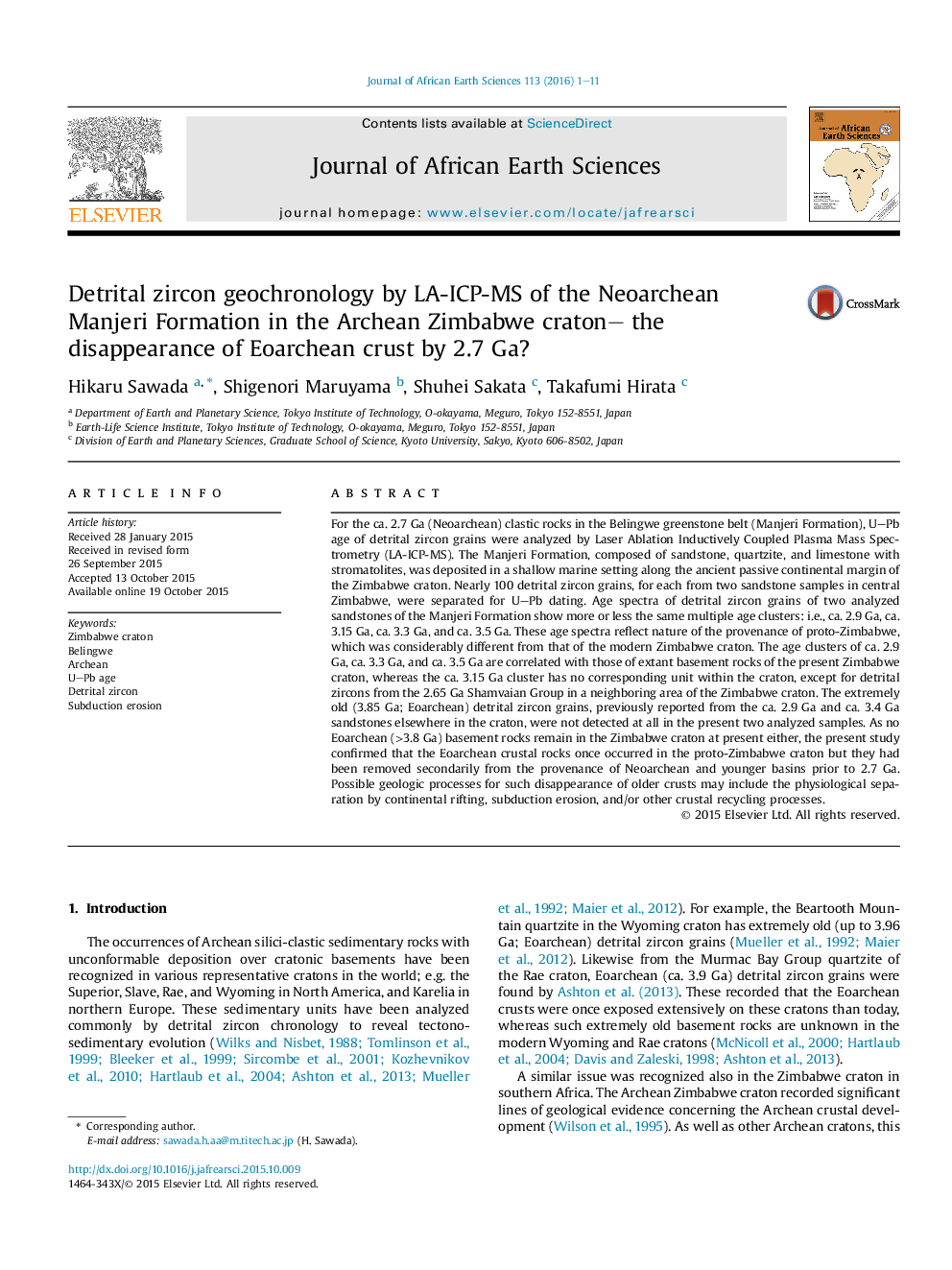| کد مقاله | کد نشریه | سال انتشار | مقاله انگلیسی | نسخه تمام متن |
|---|---|---|---|---|
| 4728267 | 1640195 | 2016 | 11 صفحه PDF | دانلود رایگان |

• Detrital zircons from ca. 2.7 Ga clastic rocks in Zimbabwe were dated by LA-ICP-MS.
• Detrital zircon grains range in 2.7 and 3.5 Ga with four peaks.
• We discuss the possible mechanism for disappearance of the Eoarchean units.
For the ca. 2.7 Ga (Neoarchean) clastic rocks in the Belingwe greenstone belt (Manjeri Formation), U–Pb age of detrital zircon grains were analyzed by Laser Ablation Inductively Coupled Plasma Mass Spectrometry (LA-ICP-MS). The Manjeri Formation, composed of sandstone, quartzite, and limestone with stromatolites, was deposited in a shallow marine setting along the ancient passive continental margin of the Zimbabwe craton. Nearly 100 detrital zircon grains, for each from two sandstone samples in central Zimbabwe, were separated for U–Pb dating. Age spectra of detrital zircon grains of two analyzed sandstones of the Manjeri Formation show more or less the same multiple age clusters: i.e., ca. 2.9 Ga, ca. 3.15 Ga, ca. 3.3 Ga, and ca. 3.5 Ga. These age spectra reflect nature of the provenance of proto-Zimbabwe, which was considerably different from that of the modern Zimbabwe craton. The age clusters of ca. 2.9 Ga, ca. 3.3 Ga, and ca. 3.5 Ga are correlated with those of extant basement rocks of the present Zimbabwe craton, whereas the ca. 3.15 Ga cluster has no corresponding unit within the craton, except for detrital zircons from the 2.65 Ga Shamvaian Group in a neighboring area of the Zimbabwe craton. The extremely old (3.85 Ga; Eoarchean) detrital zircon grains, previously reported from the ca. 2.9 Ga and ca. 3.4 Ga sandstones elsewhere in the craton, were not detected at all in the present two analyzed samples. As no Eoarchean (>3.8 Ga) basement rocks remain in the Zimbabwe craton at present either, the present study confirmed that the Eoarchean crustal rocks once occurred in the proto-Zimbabwe craton but they had been removed secondarily from the provenance of Neoarchean and younger basins prior to 2.7 Ga. Possible geologic processes for such disappearance of older crusts may include the physiological separation by continental rifting, subduction erosion, and/or other crustal recycling processes.
Journal: Journal of African Earth Sciences - Volume 113, January 2016, Pages 1–11